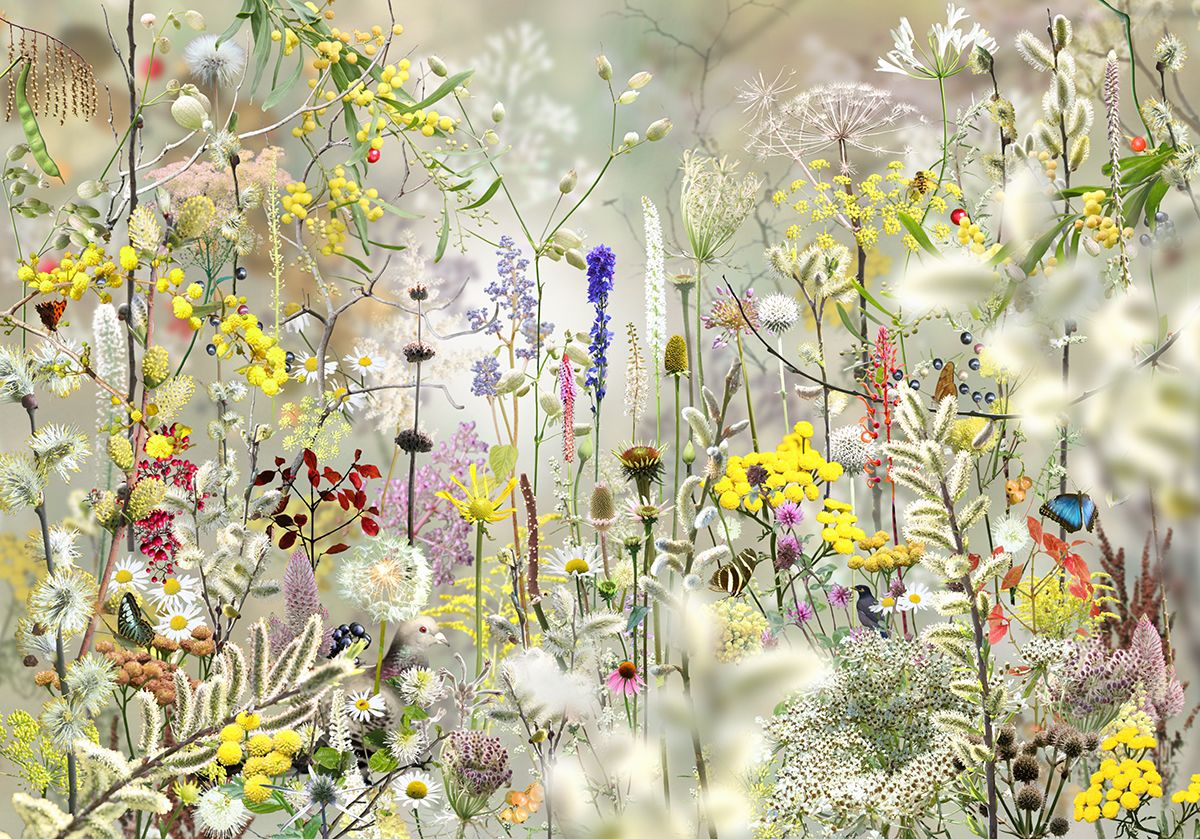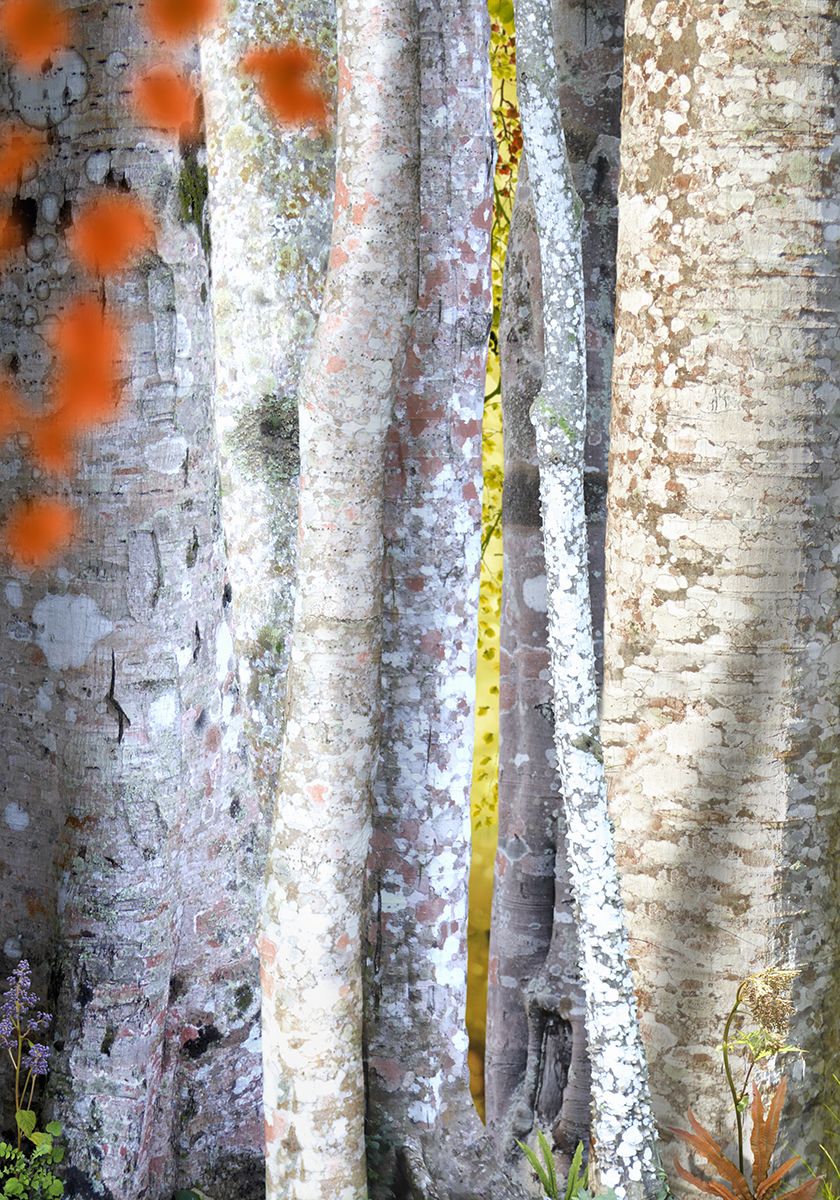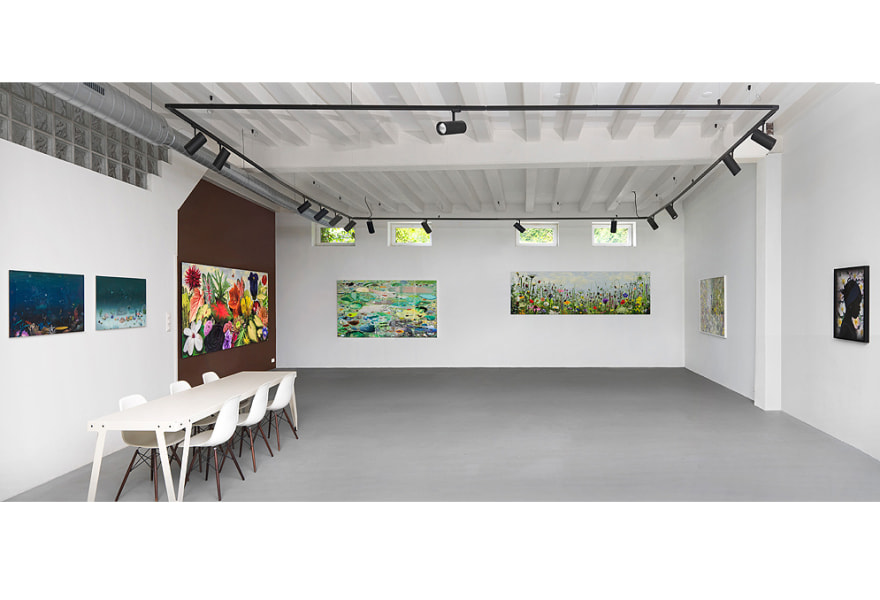21 november 2023, Wouter van den Eijkel
Making Nature chronicles Ruud van Empel's evolution towards abstraction
Making Nature, the inaugural exhibition of Ruud van Empel at Galerie Fontana, provides a fantastic overview of Van Empel's work over the past ten years. The show also features the first pieces from his new Pollution series, marking Van Empel's first foray into abstraction.
The works in Van Empel's new Pollution series are compositions of drops of chemical liquids he experimented with during the pandemic. The drops lack a fixed form and vary in size, shape and colour. They do not refer to any specific person, object, garment or plant, unlike Van Empel's usual subjects.

Ruud van Empel, POLLUTION #5, 2021, Galerie Fontana
Unable to work with models during the lockdowns and restricted in outdoor activities, Van Empel conceived the idea of working with liquids. Readily available and deliverable by regular mail, these liquids did not require significant alteration to his technique, only a shift in subject matter. This transition stems not only from a lifelong admiration for Willem de Kooning's work, but also represents a logical progression in a body of work that has increasingly embraced abstraction in recent years.
Basic material
Van Empel's transition to abstract work at a somewhat later stage in his career is not surprising given his initial career path. After graduating from art school, he spent several years as a set and costume designer for theatre and television. Notably, he contributed to the acclaimed programme Kreatief met Kurk (VPRO, 1992-1994). In addition to his professional work, he created personal pieces, with paper, scissors and glue as his primary materials for collages.
As a collage artist, Van Empel quickly recognised the unprecedented possibilities of Photoshop, which debuted in 1990 (version 1.0), as the techniques were essentially the same—cutting, pasting and layering, albeit digitally. Alongside artists like Loretta Lux and Micha Klein, Van Empel was among the first to incorporate the software into his work, resulting in a blazing start to his career.

Ruud van Empel, Generation #1 (2010), Galerie Fontana. Photo by: Gert Jan van Rooij
Generation #1
But Van Empel never fully abandoned set and costume design. One of the earliest works featured in Making Nature is Generation #1 (2010), a wall-sized class picture from an elementary school with everyone dressed in vibrant 1970s attire spanning all seasons. What is striking is the absence of depth and shadow, as none of the students actually exist. Van Empel meticulously constructed each one from various components—colourful clothing, eyes, ears, nose and glasses—all cut and combined in this digital collage from different photographs. While Photoshop is often used to enhance people's appearances, there is no such intention here. Interestingly, many of the students are portrayed with thick glasses and protruding ears and are overweight. There is also a notable overrepresentation of redheads (9 out of 34 students).

Ruud van Empel, World#19 (2006), Galerie Fontana. Photo by: Gert Jan de Rooij
Van Empel also applied this process to portraits of individual subjects, as seen in World #19 (2006), where a dark-skinned girl in a dark green dress blends into large green leaves in the background. The white of her collar stands out the most. In 2015, Van Empel did something similar in the Mood series, a few pieces of which are also on display at Fontana.
Floresta
Exhibition titles are often cryptic, but with Van Empel, you can take it quite literally. Making Nature refers to Van Empel's process, particularly evident in the Floresta series (2018-2019), where he photographed plants in Amsterdam's Westerpark. Once home, he meticulously cut out the plants. While this may not be too labour-intensive for a large green leaf of a houseplant, it becomes extremely time-consuming for, say, cow parsley, requiring meticulous cutting of all details. Once in Van Empel's database, the plants can be used endlessly in digital collages, resulting in unique compositions, partly because Van Empel juxtaposes native species with exotic ones.

Ruud van Empel, FLORESTA #1, 2018, Galerie Fontana
Van Empel also approached abstraction in the past. In the Collage series (2017), he created compositions with trees in a forest. In some works, the tree trunks are so close together that only a detail reveals what you are looking at; otherwise, the composition is abstract. A precursor to the Pollution series.

Ruud van Empel, Collage #2, 2017, Galerie Fontana
